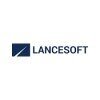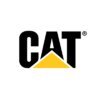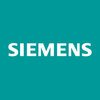Top 50 Docker Interview Questions and Answers
Updated 4 Jul 2025

Asked in Einfochips

Q. How do you log in to a Docker registry?
To login docker registry, use the docker login command with the registry URL, username, and password.
Use the docker login command followed by the registry URL
Enter the username and password when prompted
Example: docker login myregistry.com -u usernam...read more

Asked in Cybage

The most commonly used instructions in a Dockerfile include FROM, RUN, COPY, and CMD.
FROM: Specifies the base image for the container
RUN: Executes commands in the container
COPY: Copies files and directories from the host to the container
CMD: Specifie...read more
Asked in Arva Health

Q. Have you worked on Docker/Kubernetes?
Yes, I have experience working with Docker and Kubernetes.
I have used Docker to containerize applications for easier deployment and scaling.
I have experience with Kubernetes for managing containerized applications in a clustered environment.
I have se...read more


Q. What is the main difference between Docker Swarm and Kubernetes?
Docker Swarm is simpler and easier to set up, while Kubernetes is more powerful and feature-rich for complex deployments.
Docker Swarm is easier to set up and manage for smaller deployments
Kubernetes is more powerful and feature-rich, suitable for com...read more
Asked in New Emerging World Of Journalism

Q. What are dangling images in Docker?
Dangling images in Docker are unused images that are not associated with any container.
Dangling images can accumulate over time and take up valuable disk space.
They can be removed using the 'docker image prune' command.
An example of a dangling image ...read more

Asked in Genpact

Q. What is a namespace in Docker?
Namespace in Docker is a way to isolate resources and avoid naming conflicts.
Namespaces provide a layer of isolation for containers
Each namespace has its own set of resources
Namespaces can be used for network, process, and mount isolation
Example: doc...read more


Asked in Capgemini Engineering

Q. What is Docker networking?
Docker network is a virtual network that allows containers to communicate with each other and with external networks.
Docker network enables communication between containers running on the same host or across different hosts.
It provides isolation and ...read more

Asked in Rapyder Cloud Solutions

Q. How do you troubleshoot a Docker container that is failing?
To troubleshoot a dying docker container, we can use logs, inspect the container, and check resource usage.
Check container logs using 'docker logs
' command Inspect the container using 'docker inspect
' command to check its status and configuration Che...read more

Asked in LanceSoft

Q. How can you view the logs for a complete request in Docker?
To see log of a complete request in docker, use docker logs command.
Use 'docker logs
' command to see logs of a specific container Use '-f' flag to follow the logs in real-time
Use '--tail' flag to specify the number of lines to show from the end of th...read more

Asked in Rapyder Cloud Solutions

Q. How do you build and push a Docker image to ECR?
To build and push a docker image to ECR, we need to create a Dockerfile, build the image, tag it, login to ECR, push the image to ECR.
Create a Dockerfile with necessary configurations
Build the image using docker build command
Tag the image using docke...read more
Docker Jobs




Asked in flydocs

Q. What is the difference between a Dockerfile and a Docker Compose file?
Dockerfile is used to build a Docker image, while Docker Compose is used to define and run multi-container Docker applications.
Dockerfile is a script that contains instructions to build a Docker image.
Docker Compose is a YAML file that defines a mult...read more

Asked in GlobalLogic

Docker Namespaces are a feature in Docker that isolates containers from each other and the host system.
Namespaces provide a way to isolate processes, network, and filesystem for containers.
Examples of namespaces include PID (process IDs), NET (networ...read more

Asked in Dell EMC

Q. What is Docker Swarm?
Docker Swarm is a container orchestration tool used to manage and scale Docker containers.
Allows for easy deployment and management of containerized applications
Automatically distributes containers across multiple hosts
Provides load balancing and ser...read more

Asked in Siemens

A Docker image registry is a repository for storing and managing Docker images.
It allows users to push and pull Docker images to and from the registry.
Popular Docker image registries include Docker Hub, Amazon ECR, and Google Container Registry.
Regis...read more

Asked in VMware Software

Docker images can be copied from one host to another using 'docker save' and 'docker load' commands.
Use 'docker save' command to save the image as a tar file on the source host
Transfer the tar file to the destination host using SCP or any other file ...read more

Asked in Larsen & Toubro Limited

Q. What are the Docker commands used inside a Docker file?
Docker commands used inside a Dockerfile
FROM - specifies the base image
RUN - executes a command in the container
COPY - copies files from host to container
WORKDIR - sets the working directory for subsequent commands
CMD - specifies the command to run w...read more

Asked in Dynamisch IT

Q. How do you check the last 50 logs of a Docker container?
To check recent last 50 logs of docker, you can use the 'docker logs' command with the '--tail' option.
Use the command 'docker logs --tail 50
' to display the last 50 logs of a specific Docker container. If you want to follow the logs in real-time, yo...read more

Asked in Paytm

Q. Write a Dockerfile for a Java application.
A Dockerfile is a text file that contains instructions for building a Docker image for a Java application.
Use a base image that includes Java, such as 'openjdk:8'
Copy the application JAR file to the image using the 'COPY' instruction
Set the working d...read more

Asked in Bharti Airtel

Q. Write a Dockerfile to run a Python script.
Dockerfile to run a Python script
Use a base Python image as the starting point
Copy the Python script into the container
Specify the command to run the Python script

Asked in Ecosmob Technologies

Q. What is Docker and how is it used?
Docker is a platform that allows you to package, distribute, and run applications in isolated containers.
Docker containers are lightweight, portable, and self-sufficient environments that include everything needed to run an application.
Docker uses co...read more

Asked in TO THE NEW

Q. Create a Dockerfile to make MongoDB available for developers.
Create a docker file to make mongodb available for developers
Use the official MongoDB Docker image as the base image
Expose the default MongoDB port (27017)
Set up any necessary environment variables or configurations
Build the Docker image using the Do...read more
Asked in Repsoft Consultancy Services

Q. Explain how to build and deploy a Docker image in AKS using ACR.
Using Docker image build and deployment in AKS with ACR
Create a Dockerfile to define the image
Build the Docker image using 'docker build' command
Push the image to Azure Container Registry (ACR)
Create a Kubernetes deployment manifest referencing the i...read more

Asked in Infosys

Q. Write a Dockerfile to build a microservice.
A Dockerfile to build a microservices application
Use a base image like Alpine Linux or Ubuntu
Install necessary dependencies and libraries
Copy the application code into the container
Expose the required ports
Specify the command to run the microservice
Asked in Value Health Care

Q. What are the differences between Docker and a server?
Docker is a platform for developing, shipping, and running applications in containers, while a server is a physical or virtual machine that hosts applications and services.
Docker is a containerization platform that allows applications to run in isola...read more

Asked in Deuex Solutions

Q. Describe Docker and its implementation.
Docker is a platform for developing, shipping, and running applications in containers.
Docker allows developers to package applications and their dependencies into containers.
Containers are lightweight, portable, and isolated environments that run on ...read more

Asked in TCS

Q. What are the advantages of using Docker?
Docker provides advantages such as portability, scalability, and isolation.
Docker allows for easy portability of applications across different environments.
Docker enables efficient use of resources and scalability through containerization.
Docker prov...read more

Asked in Tata Communications

Q. How do you perform Docker migration from one machine to another machine?
Docker migration from one machine to another involves exporting the container as an image, transferring the image to the new machine, and then importing it.
Export the Docker container as an image using 'docker save' command
Transfer the image to the n...read more

Asked in Social Prachar

Q. What is the difference between Docker and Ansible?
Docker is a containerization platform used to package and run applications, while Ansible is a configuration management tool used for automating IT infrastructure tasks.
Docker is used to create containers that encapsulate an application and its depen...read more

Asked in Mphasis

Q. What is a Dockerfile? Explain.
Dockerfile is a text document that contains all the commands a user could call on the command line to assemble an image.
Dockerfile is used to build Docker images by specifying a series of instructions.
It includes commands like FROM, RUN, COPY, CMD, e...read more

Asked in Nvidia

Q. Write a Dockerfile to set up Nginx and expose it on port 8080.
Dockerfile to setup Nginx and expose it with port 8080
Use the official Nginx image as the base image
Copy the custom Nginx configuration file to the container
Expose port 8080 in the Dockerfile
Start Nginx in the foreground using the CMD instruction

Top Interview Questions for Related Skills
Interview Experiences of Popular Companies










Interview Questions of Docker Related Designations



Reviews
Interviews
Salaries
Users










